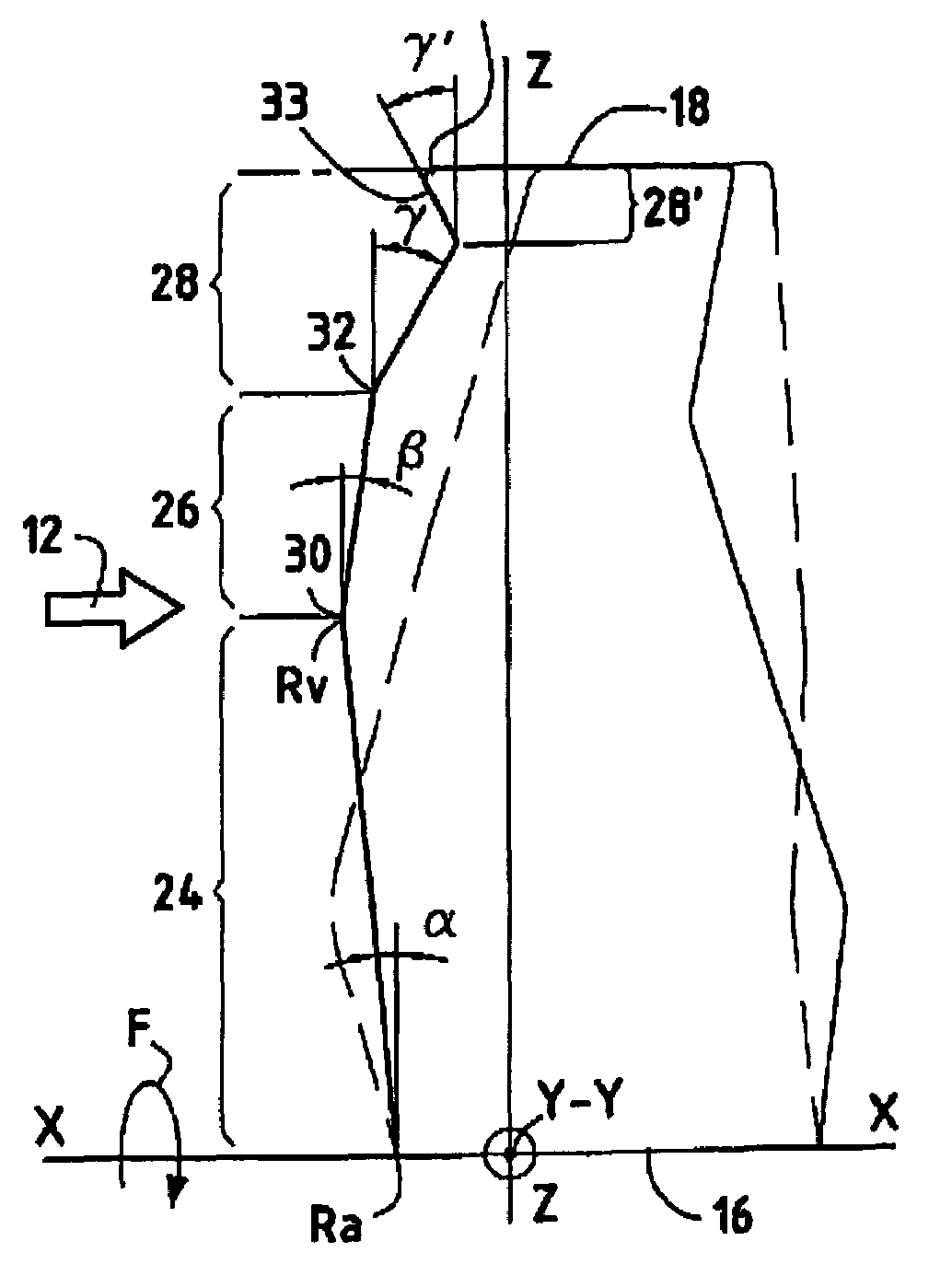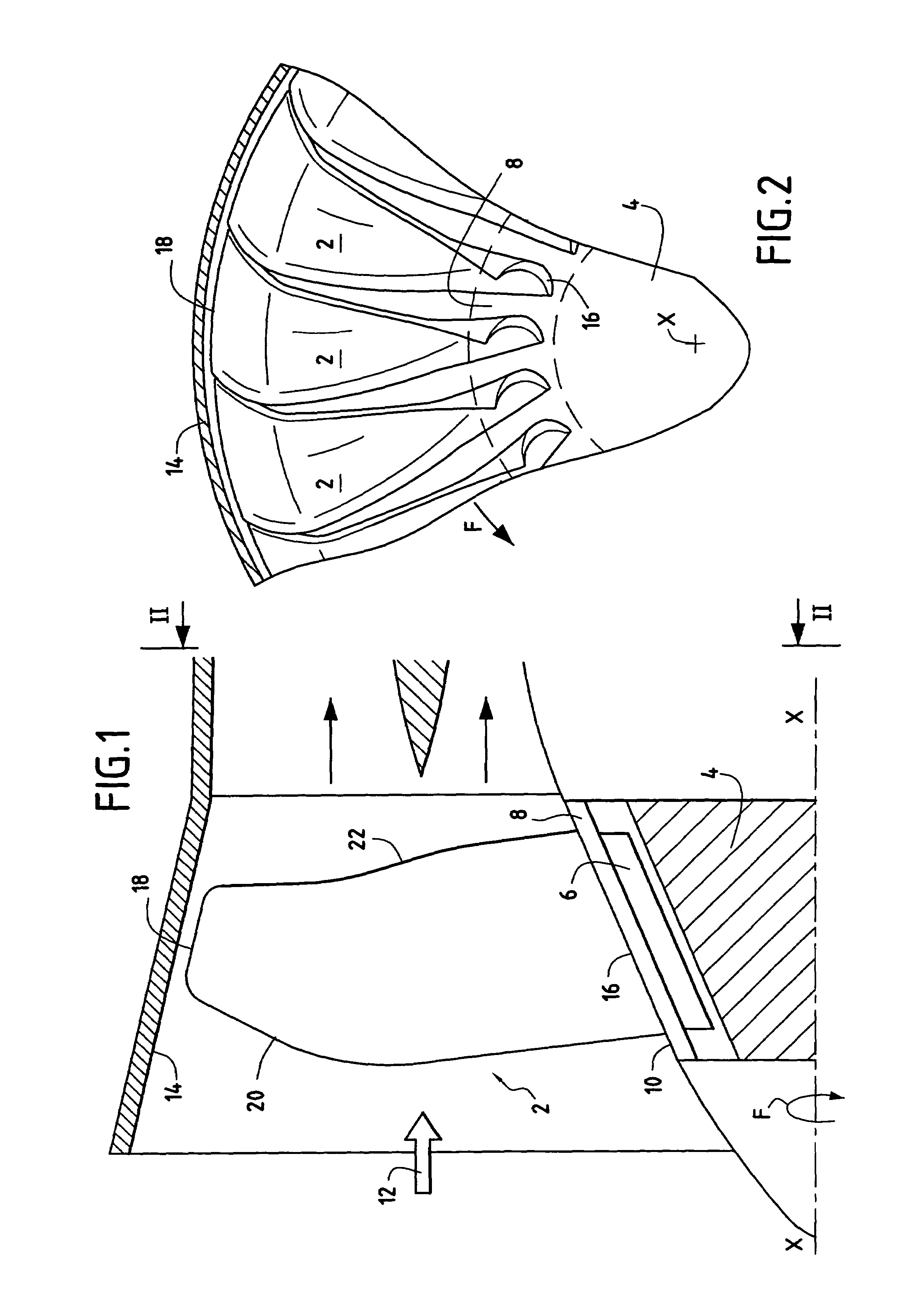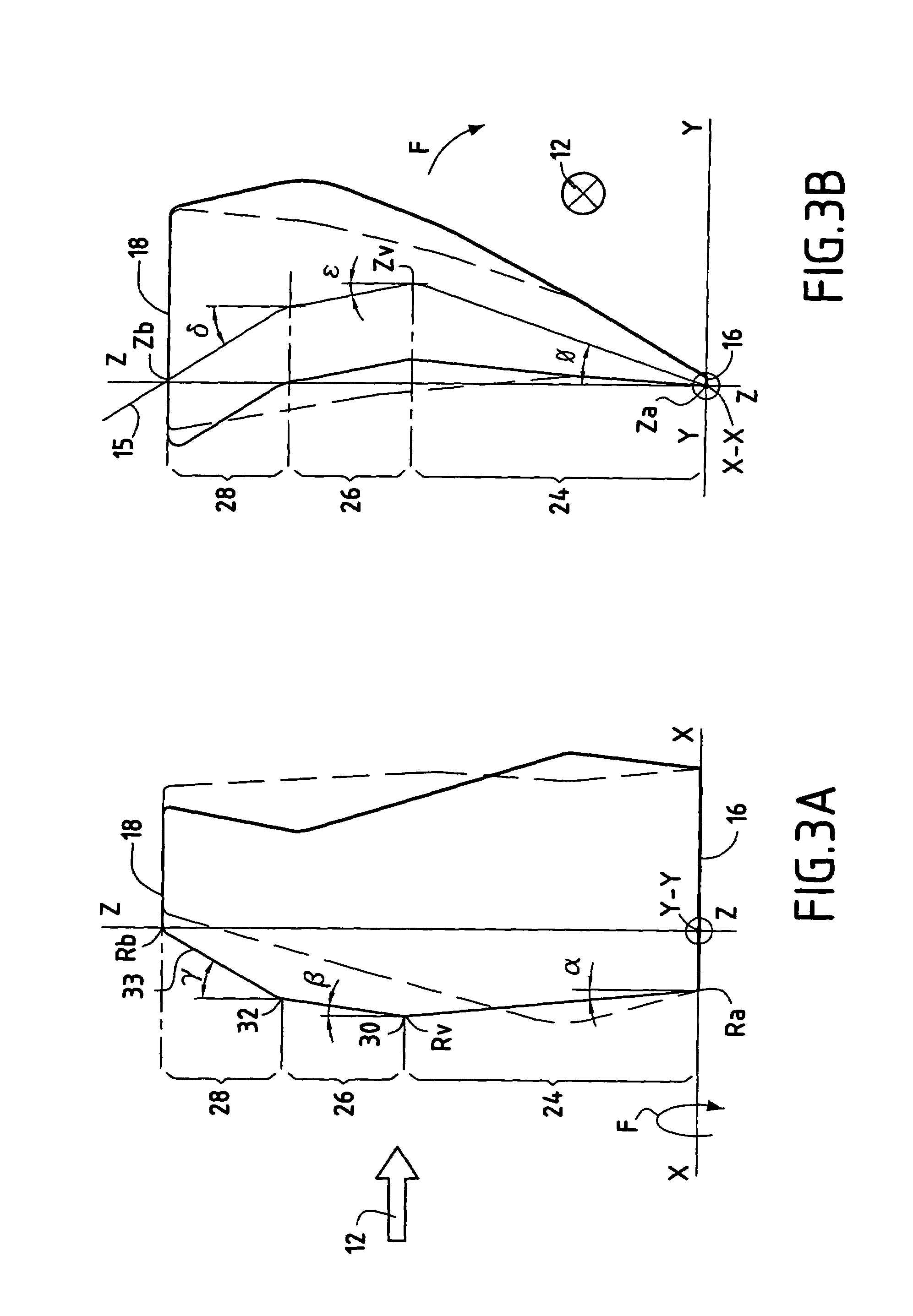Backswept turbojet blade
a turbojet and blade technology, applied in the field of backswept blades for turbojets, can solve the problems of large noise sources, noise drawback of generating high levels, and noise generation, and achieve the effect of not harming the efficiency of the engin
- Summary
- Abstract
- Description
- Claims
- Application Information
AI Technical Summary
Benefits of technology
Problems solved by technology
Method used
Image
Examples
Embodiment Construction
[0018]FIGS. 1 and 2 are fragmentary and diagrammatic longitudinal and cross-sectional views of a turbojet fan fitted with blades constituting an embodiment of the invention. In the figures, the fan comprises a row of blades 2 that are regularly spaced apart from one another around a disk or hub 4. Each blade 2 is fixed to the disk or hub 4 by means of a root 6, which disk or hub 4 rotates about a longitudinal axis X—X of the turbojet in the direction of rotation indicated by arrow F. Each blade 2 also has a platform 8 which extends part of the way around the longitudinal axis X—X. When the blades are assembled on the disk or hub 4, the platforms 8 of adjacent blades come into mutual contact so as to define an inside wall 10 for an airflow stream 12 passing through the fan. A wall 14 of a casing surrounding the fan forms the outside wall of the airflow stream.
[0019]For the description below, the radial axis Z—Z of the turbojet is defined as being the axis perpendicular to the longitu...
PUM
 Login to View More
Login to View More Abstract
Description
Claims
Application Information
 Login to View More
Login to View More - R&D
- Intellectual Property
- Life Sciences
- Materials
- Tech Scout
- Unparalleled Data Quality
- Higher Quality Content
- 60% Fewer Hallucinations
Browse by: Latest US Patents, China's latest patents, Technical Efficacy Thesaurus, Application Domain, Technology Topic, Popular Technical Reports.
© 2025 PatSnap. All rights reserved.Legal|Privacy policy|Modern Slavery Act Transparency Statement|Sitemap|About US| Contact US: help@patsnap.com



